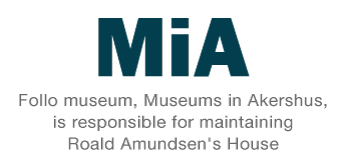Roald Amundsen’s life, in brief
1872
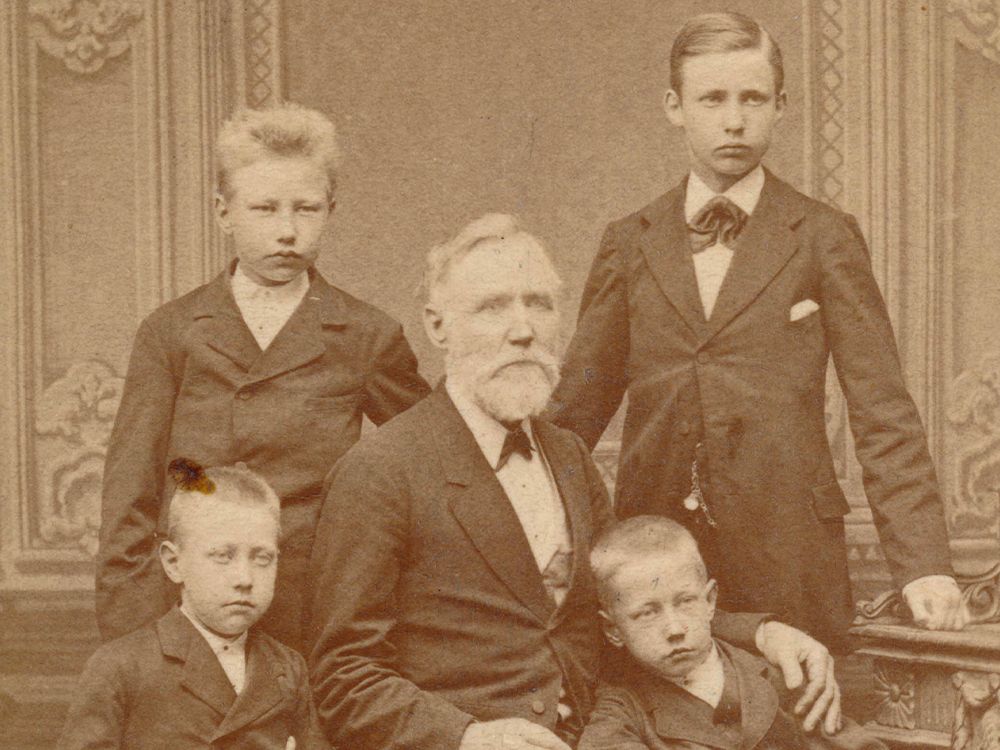
Roald Engebreth Gravning Amundsen is born 16 July. A couple of months later, the family moves from “Tomta” in Borge (Østfold/Viken) to Kristiania (Oslo). Roald Amundsen grows up together with his older brothers Leon, Gustav and Tonni in Uranienborgveien 9.
Read more about Amundsen’s childhood
1886–89

His father, shipowner Jens Amundsen, dies when Roald is 14 years old. At home, the nanny Betty takes over primary care of the boys. A year later, Roald reads the books by polar explorer Sir John Franklin with fervent interest. In 1889, at the age of 17, he joins the crowd in downtown Oslo celebrating the return of Fridtjof Nansen from his Greenland expedition.
“For the first time something in my secret thoughts whispered clearly and tremulously: ‘If you could make the Northwest Passage!’”
Read more about Amundsen’s early polar interest
1890–93

In autumn 1890, Roald starts university and eventually begins studying medicine.
In autumn 1893, his mother, Gustava Amundsen, dies and Roald ends his studies. He serves his compulsory military duty in the Kristiania (Oslo) Battalion at Gardermoen.
1893–96

Around new year 1894, Amundsen sets off on an unsuccessful ski tour on the Hardangervidda plateau with Laurentius Urdahl and Wilhelm Holst.
In spring 1894, Roald finds work on the sealing ship Magdalena. In the spring of 189, Amundsen took the helmsman’s exam, 2nd class, at Kristiania Seamen’s School.
In January 1896, he sets off on another ski tour over Hardangervidda, this time with his brother, Leon. That summer, Amundsen applies for a place on the Belgian Antarctic Expedition led by Adrien de Gerlache. He is taken on as a sailor and skier but during the expedition becomes First Officer.
Read more about Amundsen’s first trips to the mountains and Arctic seas
1897–99
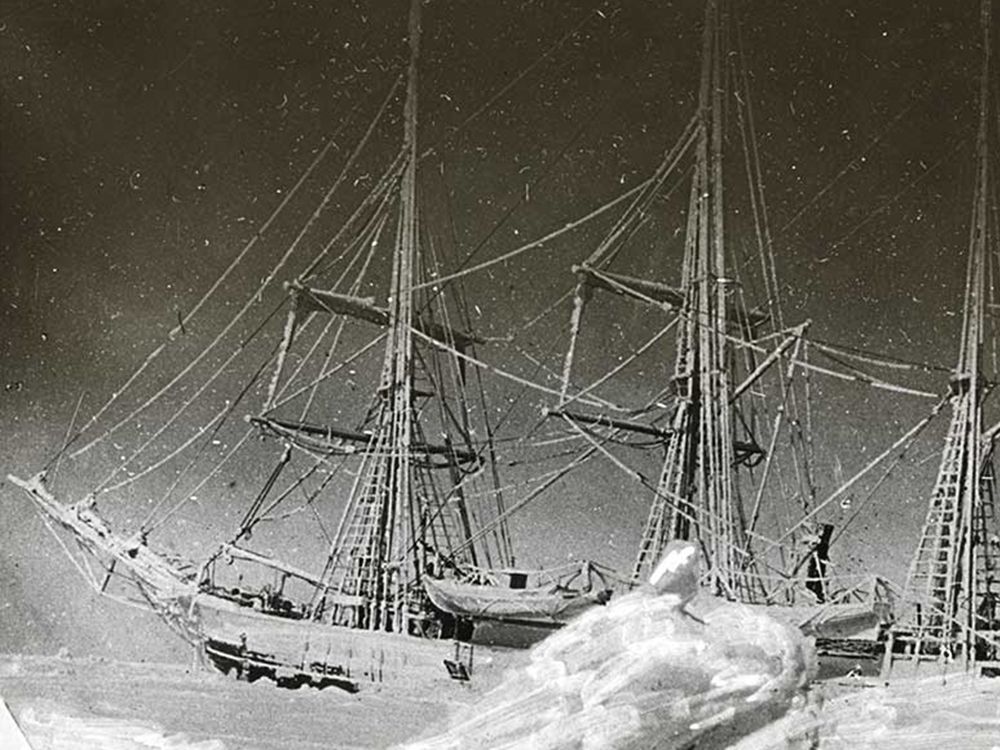
In winter 1897, Roald is in Antwerp to learn navigation as a part of his preparations for Antarctica. His stay is cut short, however, when he finds his landlady dead, having taken her own life. The two had had a close relationship and Amundsen takes it badly.
The Belgica expedition departs Antwerp on 16 August 1897. In March 1898, they are frozen fast in the ice and must overwinter. The expedition gives Amundsen invaluable experience and he becomes close friends with the American expedition doctor, Frederick Cook.
In March 1899, the Belgica escapes the ice and begins the journey home.
Read more about Belgica expedition
1899–1901
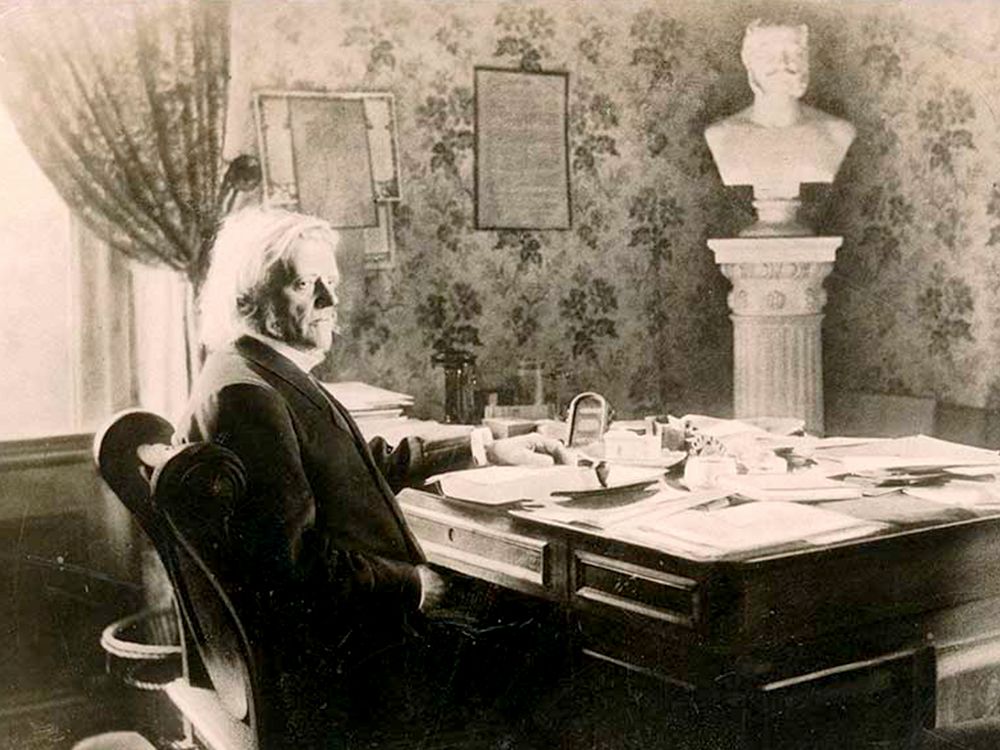
In September 1899, Roald and Leon cycle from Kristiania (Oslo) to Paris. Roald travels from there to the USA, reading Fredrick Jackson’s “A Thousand Days in The Arctic” on the journey and filling two books with his own notes. In autumn 1900, he studies earth magnetism with Georg von Neumayer at the Deutsche Seewarte in Hamburg, Germany. Once home in Norway, he visits Fridtjof Nansen and explains his plan to sail through the Northwest Passage and explore the magnetic North Pole.
Amundsen acquires the sloop Gjøa in Tromsø in January, 1901, and goes out that summer for sea trials in the Arctic Ocean. In Tromsø, he gets to know Fritz Gottlieb Zapffe, who remains a close friend for the rest of Roald’s life.
Read more about the cycle tour and preparations
1903–06

The Gjøa sails through the Northwest Passage, with Amundsen as leader. Also on board are Anton Lund, Helmer Hanssen, Peder Ristvedt, Godfred Hansen, Gustav Juel Wiik and Adolf Henrik Lindstrøm. Although they are through the passage by August 1905, they must overwinter at King Point before returning home. From King Point, Amundsen drives a dog team to Eagle City to send telegrams about the expedition. Later that winter, Gustav Juel Wiik dies and is buried there.
Read more about the Gjøa expedition
1908

In May 1908, Roald purchases a part of the Rødsten property in Svartskog and calls the house Uranienborg. In 1913, Amundsen buys the adjacent land above Uranienborg, including the house that would keep the name Rødsten and become a home for Leon and his family.
In November, Amundsen presents plans for a North Pole expedition to the Norwegian Geographical Society in Kristiania (Oslo).
1909

In September 1909 comes the news in Norwegian newspapers that the North Pole has been reached. First comes a report that American Frederick Cook, Amundsen’s friend from the Belgica, stood at the Pole on April 21, 1908. Days later comes Robert Peary’s claim to have reached the North Pole first in April 1909, along with the accusation that Cook is a fraud.
Both expeditions’ claims are still being debated.
Amundsen informs the crew that his North Pole expedition is on hold and travels to Copenhagen to meet Cook. In secret, Amundsen begins planning an expedition to the Antarctic and the South Pole.
Read more about the North Pole controversy
1910–12
In early June 1910, the polar ship Fram is anchored in Bunnefjorden by Uranienborg. Few know at this point that the expedition’s goal is no longer the North Pole, but the South Pole.
On 14 December 1911, Amundsen stands with Oscar Wisting, Sverre Hassel, Helmer Hanssen and Olav Bjaaland at the South Pole, the first in history to do so.
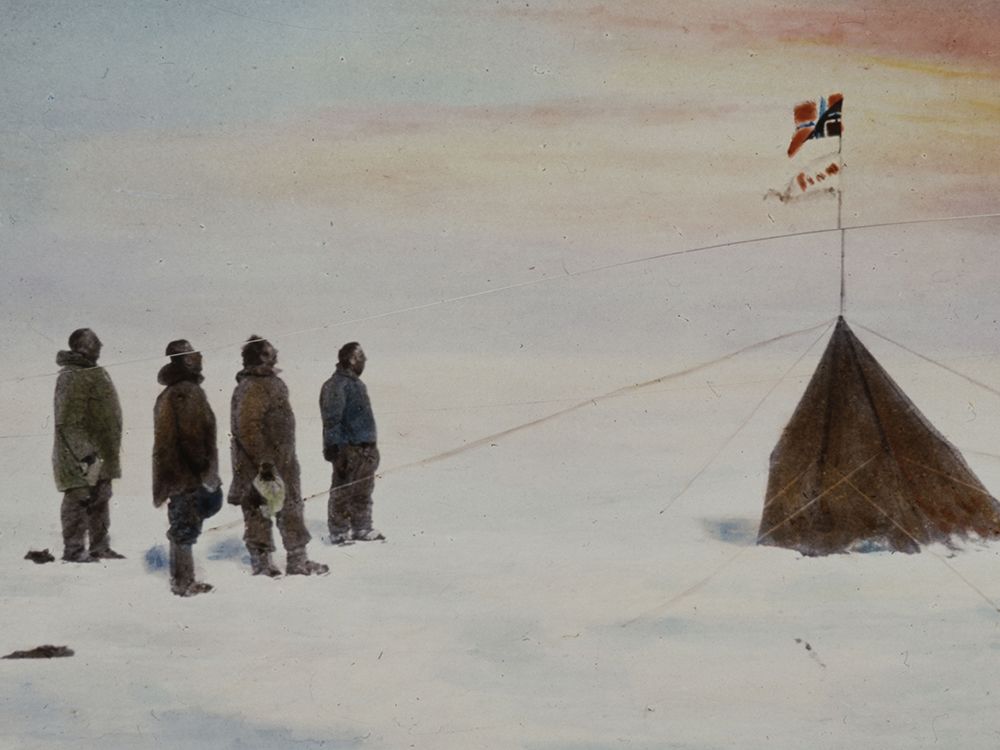
Read the story of the Fram expedition
1914–18
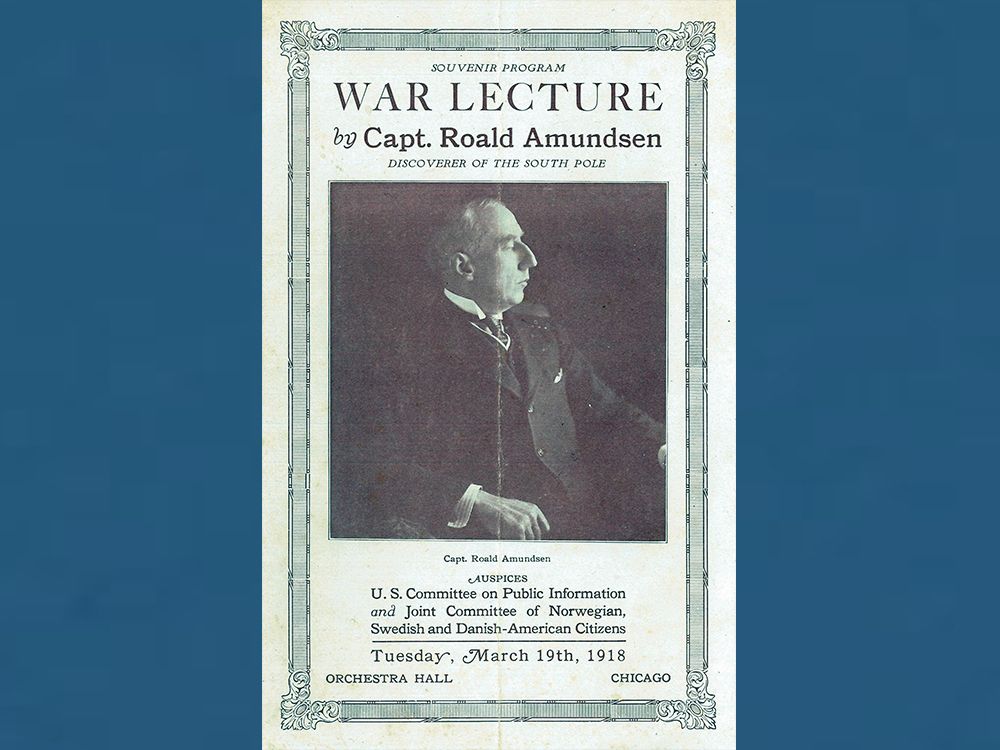
On 11 June 1914, Amundsen obtains a pilot’s license in dramatic fashion, emerging unscathed from a plane crash before later completing the exam.
World War I inevitably impacts the planning of Amundsen’s expedition over the Arctic Ocean, but on 7 June 1917, the new polar vessel Maud is launched.
In January 1918, Amundsen travels to the Western Front in France. Later that spring, he holds several lectures in the USA to encourage support there for the Western powers in their war effort.
Read more about aircrafts, shipbuilding and war lectures
1918–21

In summer 1918, the Maud sails from Norway for the Northeast passage.
In 1920, Roald takes the young polar bear cub, Marie, on board. But after only a month, she is killed, and later stuffed and taken to Uranienborg.
Two girls, Camilla and Nita, come on board in 1921 while the Maud is in East Siberia. In May, Amundsen leaves the Maud and travels with the two girls to Nome, Alaska. They spend the rest of the year in Seattle.
Read more about the Maud expedition
1922–25

Now under the leadership of Oscar Wisting, the crew of the Maud makes another attempt to drift across the Arctic Ocean, without success.
Camilla and Nita travel with Elise Wisting to Norway in January, 1922. Amundsen follows them later.
In June of that year, Amundsen meets Elisabeth “Bess” Magids aboard the S.S. Victoria between Nome and Seattle.
In September 1924, Amundsen files for bankruptcy.
Read more about the bankruptcy
1925
Amundsen sets off for the North Pole with Dornier Wal flying boats N 24 and N 25 from Ny-Ålesund, Spitsbergen, accompanied by Hjalmar Riiser-Larsen, Karl Feucht, Leif Dietrichson, Lincoln Ellsworth and Oskar Omdal.
They are forced to land on the ice at 88 degrees north. Only after twenty five days on the ice does they manage to take off with N 25 and return home.
Read the story of the expedition to 88 degrees north
Explore the 3d model of the Dornier Wal flying boat
1926

On 12 April, Amundsen speaks on the radio from his home at Svartskog.
Over the same month, a struggle plays out between Roald and Leon about the properties at Svartskog. Its eventual settlement sees the two houses sold to Roald’s friends Hermann Gade and Don Pedro Christophersen.
In May, the airship Norge leaves Ny-Ålesund with 16 men and the fox terrier Titina on board. They fly over the North Pole and land in Teller, Alaska, 72 hours after taking off. Amundsen and Oscar Wisting thus become the first to plant a flag at both geographic poles.
In June, Gade and Don Pedro grant Amundsen right of use of the two properties in Bunnefjorden.
Read more about the Norge expedition
1927
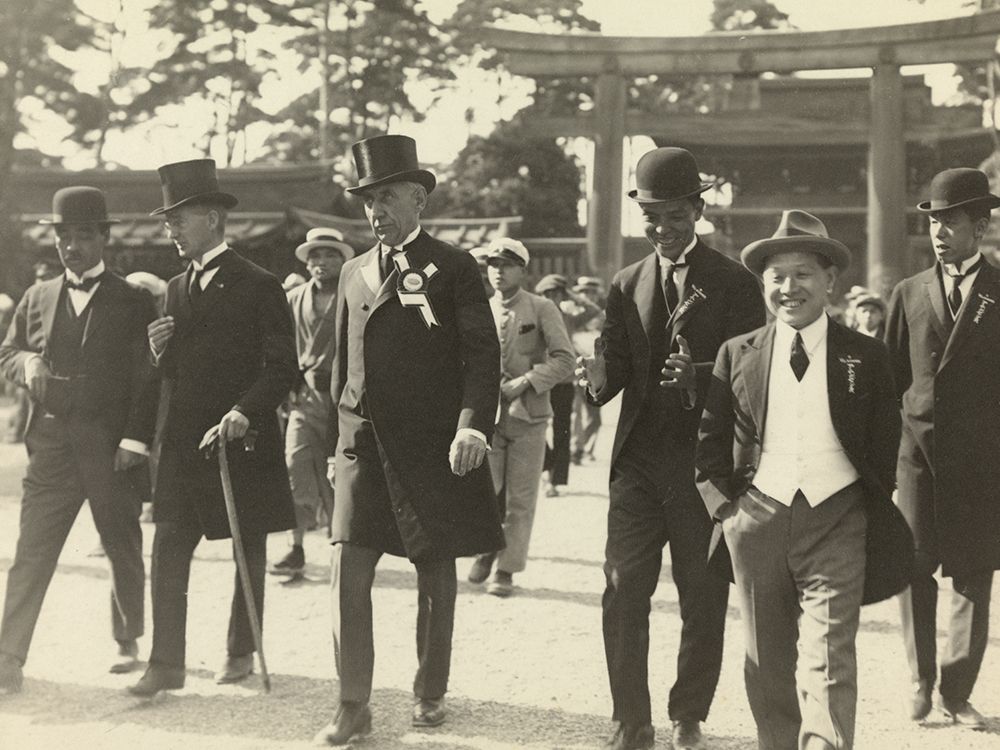
This year sees the appearance of Amundsen’s autobiography, published in English as “My Life as an Explorer”. In a letter, he writes of the biography, “I am now done with my memoirs. Shit – they are ugly.”
In the summer, he makes a lecture tour of Japan.
Just before Christmas 1927, Bess Magids comes to stay with Amundsen at Uranienborg, before returning to Alaska in March 1928 to divorce her husband in order to marry Roald.
Read more about the lecture tour in Japan
1928

On 25 May, Umberto Nobile crashes in the airship Italia on the ice north of Svalbard. Amundsen wants to be part of the rescue operation.
On 16 June, he closes the door to Uranienborg for the last time and takes the night train with Leif Dietrichson to Bergen, where he meets the French naval aircraft Latham 47.02 and its crew.
On 18 June, they take off from Tromsø heading north, never to be seen again. A little debris is all that is found.
A few weeks later, Bess Magids arrives in Oslo on a transatlantic liner. While waiting for Amundsen to return, she lives at Uranienborg for a short time and becomes the house’s last resident.
Read more about the Latham expedition

